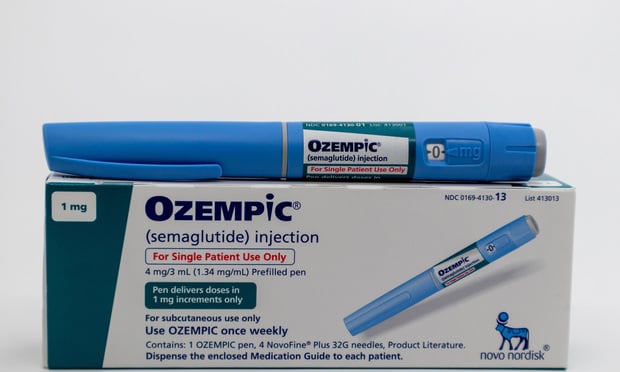Today’s “digitized workforce” is spending more time onelectronic devices than ever before— during work hours, at home and even during breaks.Employees’ eyes are feeling the impact, and workers areincreasingly concerned about vision protection.
|The 2016 Transitions Optical Employee Perceptions of VisionBenefits survey, conducted by Wakefield Research, polled morethan 1,000 part-time and full-time employees. Eight in 10 employeessay they want more light protection in their eyewear. Some of thisdemand is likely being driven by the buzz around blue light. Themedia coverage about how the blue light from our digital devicescan impact everything from quality sleep to digital eyestrain has gained afoothold in the public consciousness.
|We’re in the early stages of growing consumer demand for bluelight protection, and brokers and employers are well positioned tobe part of the conversation. Benefit administrators and brokers whounderstand the importance of increasing vision benefit enrollmentand encouraging more regular visits with an optometrist should viewthis as an opportunity to connect with members through a trendingtopic. Now is the time to enlighten employers and their employeesabout a growing health problem while offering a practical solutionthrough a benefit already on the market — managed vision care.One-third of employees are unsure whether their current lensesprovide protection from harmful blue light; but by all indications,making the link between lenses covered under a vision plan available through theiremployer and blue light protection is a topic they would tuneinto.
|A growing need
|The blue light discussion will continue to grow louder. Digitaldevice use is on the rise among millennials (who will make up halfthe workforce by 2020) and Generation Z (the first truly digitalnatives, already making up 20 million of the global workforce andanticipated to be 25 million by 2017). Their lives areintrinsically intertwined with their phones and computers, at workand in leisure time. Just look at the ready adoption oftelemedicine by these segments of the population, as well as theirinfluence on our personal habits and vocabulary — they aren’tthe only ones binge watching television or using the term.
|A significant portion of the workforce is also raising childrenwhose exposure to blue light is even more acute. A study by theKaiser Family Foundation found that children ages 8 to18 spend anaverage of 7.5 hours a day on a digital device.
|In addition to digital strain, which causes a drop inproductivity and interferes with visual acuity in people whosevision is otherwise fine, excess exposure to harmful blue light hasbeen linked to macular degeneration, one of the mostserious and devastating vision diseases. Macular degeneration isthe leading cause of vision loss in adults over the age of 50according to the National Eye Institute, and is currentlyincurable. Those with macular degeneration struggle with reading,driving a car, recognizing faces and colors and the fine details ofobjects. Due to an aging population, scientists project thatincidents of macular degeneration will soar to 6.3 million by 2030— epidemic proportions. The impact of blue light is expectedto swell the numbers of Americans with the disease beyond what wewould expect to see in a population with more older people, and toincrease the incidence in people younger than age 50.
|Since we’re not going to work less, convince schools not to usethe latest technology for engaging students or abandon smartphonesany time soon, it is important to recommend and provide educationabout vision benefits that can help finance the products in themarket today. For instance, some plans are designed to cover thelatest lens and coating technology sooner, as well as to makeoptions that have been available longer more affordable to memberswho prioritize blue light protection. For instance, blue lightprotection and blocking have been standard features ofsome lenses for decades. Access to technology like this is oneof the factors I consider when deciding which benefit plan torecommend to a client.
|Improving blue light eyeQ
|According to The Vision Council, 65 percent of Americans report experiencingcommon symptoms of digital eyestrain, including neck and back pain,headache, blurred vision and dry eyes. Only a fraction of thosewith symptoms link the effects with the cause or understand therole of blue light with what they are experiencing. Even Americanswho know the connection between digital devices and eyestrainrarely understand that blue light is present in nature as well asin technology, so protective measures are as valuable to people whowork outdoors as it is to employees who spend much of their day infront of a digital screen.
|Digital eyestrain is irritating, painful and a productivitykiller. Blue light is a likely contributor, especially outdoors, asblue light from the sun scatters through the atmosphere and cancause glare, resulting in visual discomfort and fatigue. Employeesare likely in the dark about this, though. According to theTransitions Optical survey:
|· Only four percent of the employeescorrectly identified four common sources of blue light: digitaldevices and screens, fluorescent lights, incandescent light bulbsand the sun.
|· Less than one in five (17 percent)knew the sun is a source of blue light.
|The sun, in fact, emits more than 100 times the intensity ofelectronic devices and screens, and, depending on time of day, 25percent to 30 percent of outdoor light is blue light. So, educationabout blue light protection should address blockage outdoors aswell as in.
|Eyewear that offers blue light protection
|When explaining the need for blue light protection to employees,providing concrete examples of what’s available in their benefitsis critical to driving enrollment and satisfaction. Some of mygo-to examples include the following:
|· Transitions® lenses,covered through all of the top managed vision care plans, filterharmful blue light while blocking 100 percent of UV radiation.Indoors, the lenses filter harmful blue light emitted by artificialsources such as digital devices and LED lights. Outdoors, thelenses activate and darken to help provide even more protectionfrom harmful blue light, intense glare and UV rays from thesun.
|· Other lens options that helpaddress blue light include Eyezen +, Essilor Smart Blue Filter, BluTech and Coppertone Polarized.
|There are also anti-reflective coatings, including CrizalPrevencia, Zeiss DuraVision Blue Protect, and Hoya Recharge. Ninetypercent of employees polled in the Transitions Optical surveybelieve a vision plan is more competitive if it covers premium lensbrands. A 2012 survey found an equal percentage agree it isimportant for their vision plan to include the latest lenstechnologies.
|Ensuring employers fully understand how their plans work andwhat’s covered will have a significant impact on employeesatisfaction with their vision offering.
Complete your profile to continue reading and get FREE access to BenefitsPRO, part of your ALM digital membership.
Your access to unlimited BenefitsPRO content isn’t changing.
Once you are an ALM digital member, you’ll receive:
- Critical BenefitsPRO information including cutting edge post-reform success strategies, access to educational webcasts and videos, resources from industry leaders, and informative Newsletters.
- Exclusive discounts on ALM, BenefitsPRO magazine and BenefitsPRO.com events
- Access to other award-winning ALM websites including ThinkAdvisor.com and Law.com
Already have an account? Sign In
© 2024 ALM Global, LLC, All Rights Reserved. Request academic re-use from www.copyright.com. All other uses, submit a request to [email protected]. For more information visit Asset & Logo Licensing.








